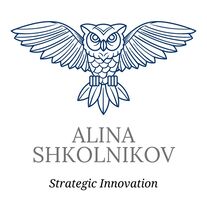|
I recently wrote a blog post on pitching and networking on the PresenTense blog. I wanted to share the same ideas I wrote there in video form :) Pitching Every pitch, no matter the length, must be made up of 3 elements: 1. What is the problem you are trying to solve? 2. What is your unique solution for that problem? 3. What do you want the people around you to do? Networking A good networker knows how to connect to the right people, a great networker knows how to make other people want to connect to them, and a top notch networker focuses entirely on connecting others! 1. Know why you network. 2. It’s all about body language. 3. Follow up - not always fun but now there are online tools that help
0 Comments
Working in the non profit world for a few years now I'n notices that the financial paradigm of: Organization - Donor - Target Market seems to have a very interesting form. It's interesting to be because it's so different from the for profit for of: Organization - Donor=target market=customer. Meaning, while in the for profit world the costumer sponsors the company, and thus is in the companies center of attention, in non-profit the donors sponsor the organization making them the center of attention and replacing the target market. This results in many problems when the main 2 are: 1. The aim of the organization is being missed because the target market, the people who actually need the services of the organization, become secondary to donors. 2. No donor = no money = no organization. At times of global financial crises it's abundantly clear that this is not a sustainable model. The question is what can be done? and while it seems that the answer is clear, build a business model, many organizations are simple afraid to do so. This seems to be the result of the aversion that the non profit world has from for profit mindsets, frameworks of thought and work structures. In order to overcome this challenge I want to suggest one framework of though and one tool: * Social Business Model: this logic model is made up of 4 parts: inputs, activities, outputs and outcomes. Each part makes up the basis to be used at this tool - * The Non-profit Business Model Canvas: This tool is based on the Business Model Canvas which helps companies and organizations plan their budgets and is aimed at refocusing the donor - beneficiary relationship. Personally, I believe that it's good to use both tools (non-profit canvas and regular canvas) in order to understand how to make an organization more self reliant and thus sustainable for the long-run. Here's a short 'How to" There always seems to be 2 main problems that arise while entrepreneurs scan the environment around them - they either feel like there's no one in the world who's trying to solve the problem they are trying to solve or that everyone in the world are trying to solve the problem they are trying to solve. Thus they can't put a clear cut framework around potential collaborators or define clearly their competitors. A framework that tries to solve this issue in the PresenTense 4C's that separates all element (companies, organizations) in one's environment (market context) into 4 - Competitors, Comparatives, Compliments and Collaborators. I've written about this framework on the PresenTense blog before and after teaching this great tool for the 3rd time this summer during the PT Global Lab (I was lucky enough to be the trainer in this program) I have a few more insights: * Competitors: most people see competition as a negative while I see it as the best opportunity to refine ones value proposition as well as target market - this might seem to be limiting but it's actually very cost effective. How come? for entrepreneurs, especially those who are just starting out, focusing on a well defined target market and having the best offer for that market can save a lot of time and money on sales dev. and PR. * Comparatives - the best way, I find, to seek out comparatives is to look at the top players in foreign markets. Tip - Wikipedia your over all aim and meant for example: Edutainment. If you choose your search work correctly you will find that Wiki can tell you about award winning, well known, projects in that field and the companies/organizations behind them. * Compliments - if you choose your compliments wisely you can actually save a lot of money. How so? Choosing young professionals on the rise, for example, can be mutually beneficial for both side - you get good workers who might lake experience but are eager to learn (and will for for cheaper) and they get their first job. Thus - lots of organizations can have universities as compliments. Note- DON'T take advantage of young professionals you want people to feel like you helped them in their career path not like you were the boss who enslaved them this way even after they leave to become more successful professionals they will reference their successes somewhat to you and your venture. * Collaborators - when you think of people or organizations you want to collaborate with it's important to make sure you reach out to them at the very beginning. The best collaborators are those organizations and companies who feel they are partnering with you and not buying from you. Thus, if possible, try to bring in representatives of potential collaborators into your work process as early as possible - even at the prototyping phase. This way they will feel like they are really contributing to you and will have more of an interest in your success. Last note - interesting TedEducational talk about competition |
AuthorMe :) Archives
August 2021
Categories |

 RSS Feed
RSS Feed
